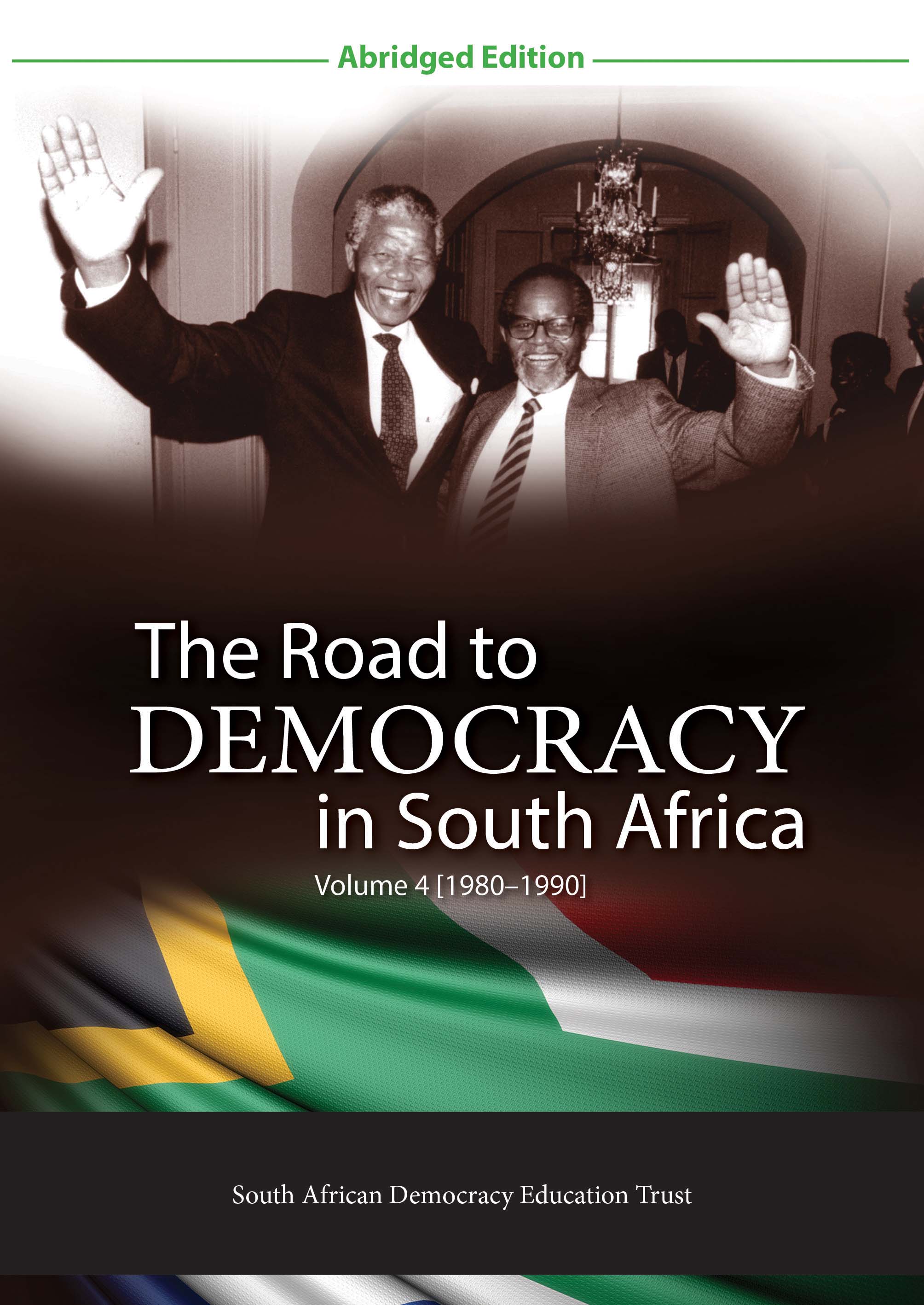Unisa Press
The Road to Democracy in South Africa – Abridged Version Vol 4
| Author: | South African Democracy Education Trust (SADET) |
|---|---|
| ISBN: | 978-1-86888-784-2 |
| Number of pages: | 223 |
| This book is not available in electronic format |
|---|
About the book
Volume 4 of the Road to Democracy in South Africa Abridged Edition series tells the history of the liberation struggle in the 1980s. The liberation movement took major strides that finally broke the backbone of white supremacist rule. By the close of the 1980s, the end was in sight and the apartheid government realised that it could no longer deny the voice of the people.
Unlike the bulky academic versions of SADET’s Road to Democracy, the Abridged Edition series is much shorter; it is quicker and easier to read. The footnotes, the lengthy quotations, and overwhelmingly intricate detail have been removed. What remains is the stark truth; the story of the dramatic 1980s that saw the mobilisation of the popular masses and the escalation of the ANC’s armed struggle inside the country. The decade also witnessed the birth of the United Democratic Front (UDF) and the Congress of South African Trade Unions (COSATU).
The names of authors of the Road to Democracy in South Africa Abridged Edition series have been removed from each chapter but theirs is the credit for researching and creating them. SADET acknowledges the sterling work by all these international scholars.
This Abridged Edition series should be read by every South African. The hope is that others on the African continent and elsewhere in the world will find much of interest in its pages. After all, the history of the liberation struggle in South Africa is one of Africa’s greatest success stories
Table of content
Preface ix
List of acronyms xv
Chapter 1
The crisis of the garrison state 1
Chapter 2
The African National Congress and negotiations 17
Chapter 3
The ANC’s internal underground political work in the 1980s 33
Chapter 4
The ANC underground, armed actions and popular resistance in
Pietermaritzburg and the surrounding Natal Midlands townships 51
Chapter 5
The ANC underground and armed actions in Northern Natal 65
Chapter 6
The ANC underground and armed actions in Southern Natal 75
Chapter 7
Hidden histories of the Eastern Cape underground 89
Chapter 8
The struggle in Port Elizabeth: A view from the northern areas, 1979–1990 105
Chapter 9
The United Democratic Front in Cape Town: 1983–1986 123
Chapter 10
The UDF political resistance and local struggles in the Vaal and West Rand townships in the 1980s 135
Chapter 11
The UDF in Lebowa and KwaNdebele during the 1980s 151
Chapter 12
Bophuthatswana in the 1980s and the UDF in the Western Transvaal 167
Chapter 13
Resistance and repression in the Northern Cape 179
Chapter 14
Activist networks and political protest in the Free State: 1983–1990 191
Chapter 15
Resistance and conformity in the Qwaqwa homeland: 1975–1990 203
Chapter 16
The South African Congress of Trade Unions and labour struggles 215 in the 1980s
Chapter 17
Trade union unity summits and the formation of the Congress of South African Trade Unions: 1980–1990 227
Chapter 18
The arts in the 1980s 239
Chapter 19
Attitudes towards feminism among women in the ANC: 1950–1990 251
Chapter 20
The ANC’s armed struggle in the 1980s 263
Chapter 21
The South African Communist Party in the 1980s 305
Chapter 22
The Pan Africanist Congress’s exile politics: 1980–1990 315
